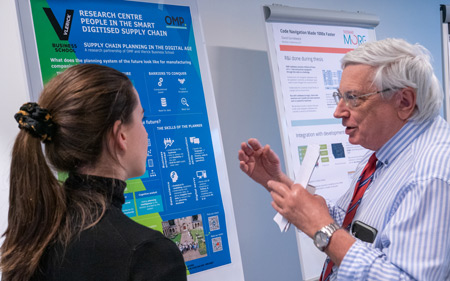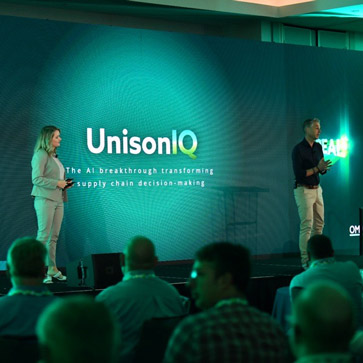
Perfect algorithms aren’t what real supply chains need
Bart Vangerven - June 17

I still remember the excitement of my first encounter with mathematical optimization. The intricate equations, the impressive graphs, and the idea that technology could find the "perfect" solution to any problem had me hooked.
But working in the real world of supply chains, I quickly realized that things are rarely that simple. Data changes fast, disruptions happen unexpectedly, and decisions need to be made right away. It’s a world where resilience is key when dealing with complexity.
The promise of technology
“Technologies like AI, machine learning, and optimization models are undeniably exciting. They promise faster, more accurate decisions.”
For a customer facing global supply chain challenges, these technologies can seem magical, capable of solving everything at once.
But there's a catch
Blog post

Optimization is not always as simple as it seems. We are not talking about optimization for toy problems: we are tackling extremely large, complex problems that are very hard – perhaps even impossible - to solve to ‘optimality’.
Even if on paper, an algorithm might look perfectly capable of delivering a perfect result, it could take days, weeks, or even longer to produce results for large-scale problems. And who has time to wait that long? Worse still, if you forget to update any relevant data before you hit that solve button, you may need to start over, and the results can be completely different.
Blog post
I’ve been there myself. When I first learned about optimization, I wanted to apply mathematical programming to every problem, believing it was the perfect solution. Now I know I fell victim to Maslow’s hammer: “It is tempting, if the only tool you have is a hammer, to treat everything as if it were a nail.”
“But over time, I learned the hard way that not every problem can or should be solved with an algorithm.”
From theory to reality: the practical path
Take a customer who insists on using a certain technology, regardless of whether it fits their needs. They’ve read about it, seen demos, and understandably want the ‘best’ solution for their problem.
But what is the best solution? The answer is often a balance between ideal theory and messy reality.
Let’s consider two options:
- The ideal path: The first leads to an elegant algorithm that solves the problem on paper. It promises the ‘optimal’ solution, and who doesn’t want that? However, this can create unintended consequences. Perhaps it has a run-time that is simply too long to be useful (remember the P vs NP problem?), or it assumes perfect data input, which is rarely the case in the real world. It could also lead to solutions that are not robust to unexpected changes.
- The practical path: The second is more grounded and maybe less glamorous, but it considers time, money, and feasibility. It uses the right techniques for the right parts of the supply chain and delivers a tailored solution that works under real conditions.
In real supply chains, disruptions (remember Covid-19?), delays, and data variability are the norm.
“Business leaders cannot afford to wait weeks for an ‘optimal’ solution. What they need is a reliable and robust plan, real fast.”
Finding the right balance
Blog post
This is where OMP comes in.
We tackle some of the world’s most complex supply chain challenges, and we do so by finding the right balance between theoretical potential and practical value.
We invest heavily in innovation and maintain strong ties with academia. We want to help businesses walk the path of the second option. We want to provide solutions that don't just solve problems but also work in the real-world conditions in which they operate.

Blog post
What real solutions look like
Every supply chain is different, with its own goals, constraints, and realities. That’s why true problem-solving isn’t just about writing the right code. It starts with listening, understanding, and working closely with our customers.The real challenge and value lie in ensuring that the solutions we design are usable, resilient, and future-proof.
“At OMP, we don’t just build solvers. We create solutions that help our customers excel, grow, and thrive in a complex, competitive world. And I’m proud to be a part of that.”
>Ready to design real-world software?

Bart Vangerven
Senior Product Analyst at OMP BE
Biography
A consultant in the OMP solver team with a decade of experience in discrete optimization, Bart has an affinity for solving difficult problems and a flair for teaching. Although his background tends towards the academic, he does always like to focus on real-world practical problems.





